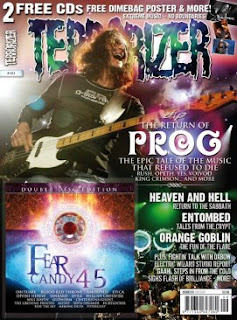
150 book titles per religion? One can imagine someone will have to write 50 books or something on the Yoruba way of life to reach the number at all. And ban 50 000 on Christian life, thinking and history to get down to it. And who is to decide what is acceptable in religious (or non-religious) practise?Too dangerous for US prisons?
"The New York Times reported this past week on a Bush administration plan that allows the government extraordinary jurisdiction over what is acceptable in religious practice. According to the article, the Office of Inspector General in the Justice Department issued recommendations to the Bureau of Prisons designed to prevent American prisons from becoming terrorist recruiting centers in 2004.
One of the recommendations was the "Standardized Chapel Library Project." The name itself elicits shivers, but what it does is worse. It first required a group of experts to compose a list of "150 book titles and 150 multimedia resources" for each religion. In order to be accommodating, lists were prepared for religions such as Christianity, Islam, Judaism, Bahaism and the African tribal religion of Yoruba.
If a book doesn't make the list, it is removed from the library. This required purge has only recently begun to wreak havoc on federal prison libraries. These libraries have amassed a huge quantity of books through donations and must now purge most of those books. According to USA Today, an inmate at the federal prison camp in Ostieville, N.Y. claims that about 600 books were removed by the chaplain this past Memorial Day to comply with the order. Six hundred books is an astounding number, but it's still not enough to recognize the vast wealth of knowledge that has now been banned.
Consider a few prominent Christian authors of the past century. Fulton J. Sheen was the first televangelist and won an Emmy in 1952 for his television series "Life is Worth Living." According to the official Web site of the cause for his canonization, Sheen wrote over ninety books. G. K. Chesteron was a popular Catholic apologist. The American Chesterton Society's Web site says Chesteron wrote 100 books and made contributions to 200 more.
So between only two Christian authors, there are about 200 to 300 works. Not all of these works will be banned, but it shows how much is being lost. The scope is magnified when you consider that Christianity has so many other authors. Between C.S. Lewis, John Calvin, Pope Benedict XVI and other Christian authors over the 2,000 years of Christianity, how can one select only 150 books?"
There is of course something to be said for censoring of prison libraries, as for most political decisions. People reading The Late, Great Planet Earth or the The God Delusion may notice a raised adrenaline level. I have personally banned TV-evangelists from my own bookshelves. Still, there are a lot more than 150 books to be written against such policies.
As long as the present American Foreign Policy is accepted, there will of course always be a need for radical anti-terrorist measures. Even if terrorism will not easily disappear with a wiser policy, my religious hangups indicates that it is rather foolish to behave like fools.








